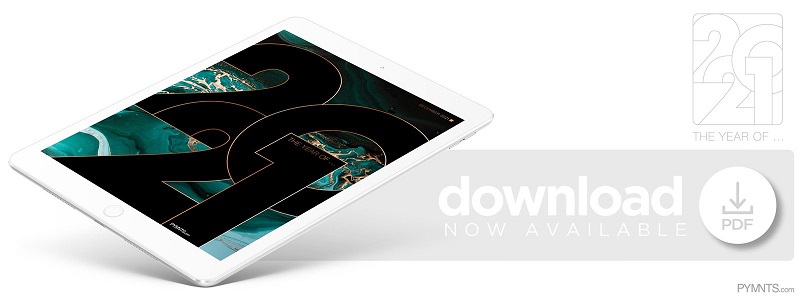Republished from PYMNTS.com eBook: 2021: The Year Of…
Over the last year, as economies tentatively reopened amid multiple spikes in new COVID variants, we saw a continued shift to eCommerce and a growing willingness to adopt new digital payment methods and experiences. Perhaps to the surprise of many, businesses mostly managed to plow through and adapt to new operating conditions. For this and other examples of resilience, “adaptability” is the word that I think best describes 2021.
Businesses Fought Through While BNPL and Crypto Rose
Businesses were able to juggle COVID-19 restrictions and social distancing guidelines while also navigating changes in customer behavior to digital. SMBs embraced contactless card and mobile payments in growing numbers, which now seem to be a convenience expected by consumers regardless of health concerns. We also saw many businesses quickly add online shopping experiences or switch entirely to a digital-first model as eCommerce continued to eat away at foot traffic.
The rise of buy now, pay later (BNPL) and crypto was particularly noteworthy. These payment options were previously on the fringes, but with the help of FinTechs and increasing consumer demand, they were brought right to the forefront of payments. The BNPL market saw explosive growth driven primarily by Gen Z and millennial consumers.
A staggering 44% of Americans have now reported using a BNPL solution to finance their purchases. Of course, major BNPL players continued to expand with rising consumer demand, but we also saw companies like Amazon, Apple and PayPal move in. Card issuers are also almost certainly on the cusp of adding a BNPL option, given its success over the last year.
The crypto space also had a year to remember. A growing number of businesses across different industries, from Microsoft to Starbucks, began supporting crypto payments. The two largest processing networks also jumped further in. Visa launched a partnership with 50 crypto platforms on card programs to allow users to convert and spend digital currency at millions of merchants. Mastercard announced it would allow its network partners to enable consumers to buy, sell and hold cryptocurrency using a digital wallet, and reward them with digital currencies under their loyalty programs.
Banks That Would Not Be Left Behind
Of course, we also saw banks adapting to changing consumer behaviors, albeit within the bounds of their limitations. We started to see the likes of BofA and Wells Fargo decide not to reopen some branches and reduce ATM networks as businesses moved online and consumers shifted from cash to digital payments. Many expedited their digital banking initiatives as online and mobile banking surged. However, we also witnessed a growing realization around the inability of legacy systems to adapt to digital payment innovations and new ways people and organizations do business.
With ongoing change as a certainty, the road ahead for these incumbents will be about developing resilient, digital-first capabilities that can handle rising digital transaction volumes and enable customers to adapt rapidly to shifting operating conditions.
In short, the last year showed us that adapting to new realities and adopting new capabilities go hand in hand and are key to resilience.
To view the full eBook, click here:



